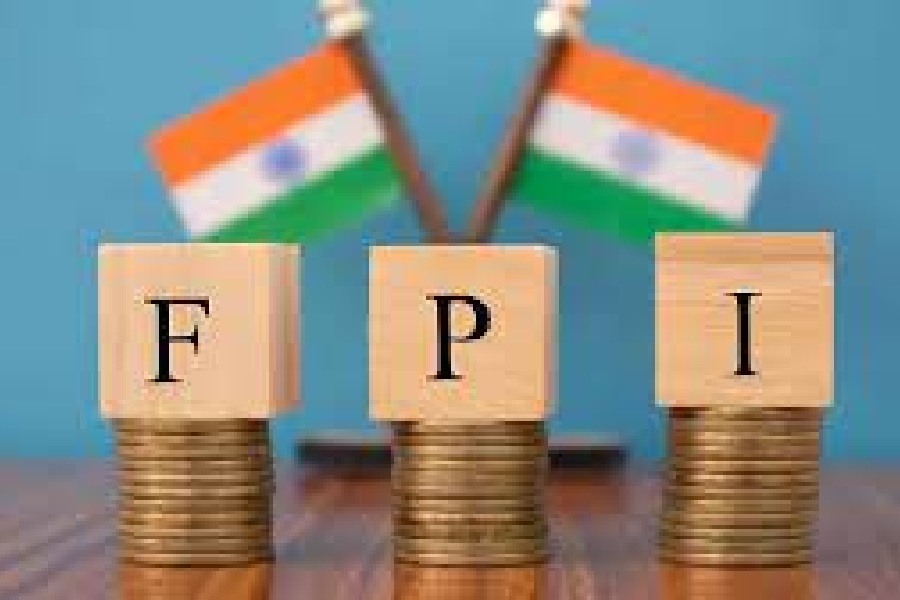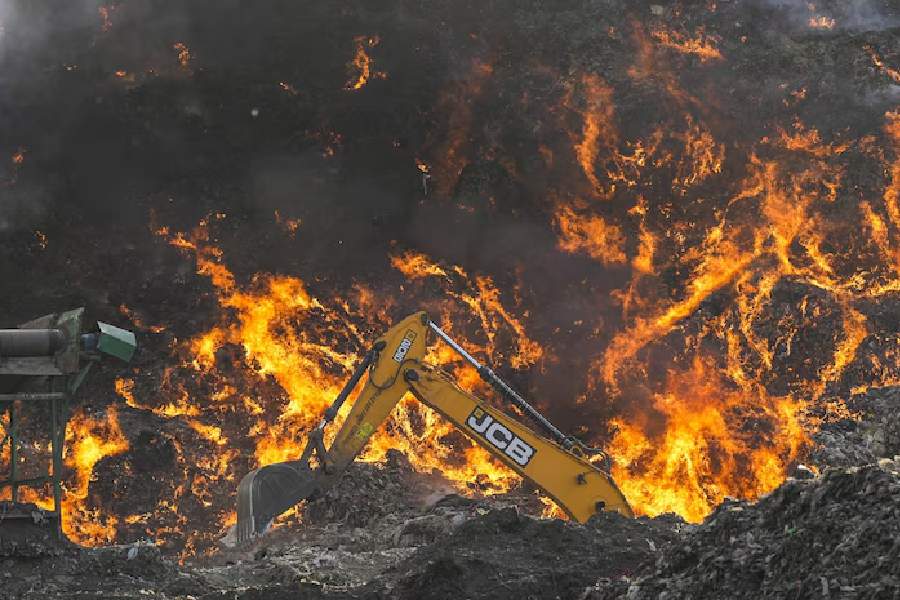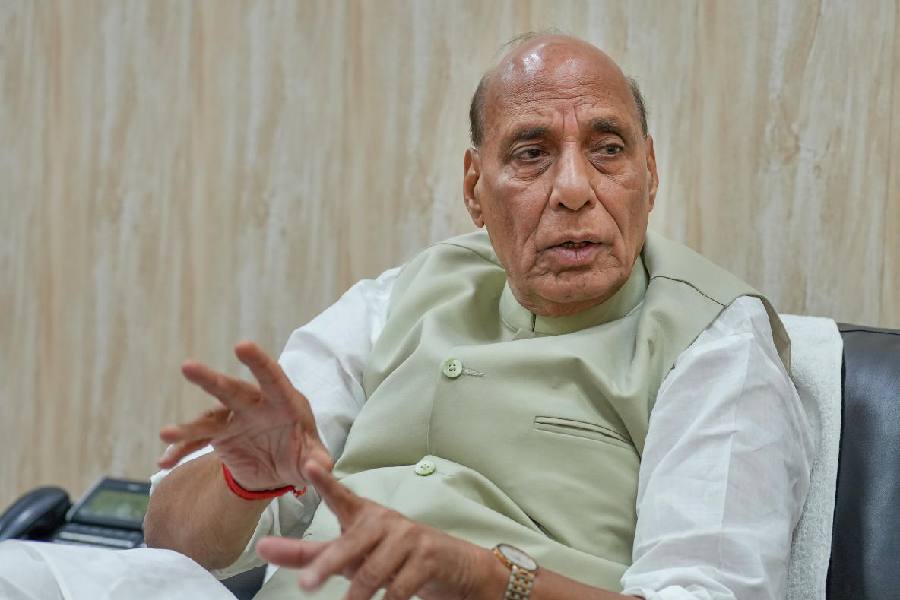Residents of the East Calcutta Wetlands were pinning their hopes on election promises, expecting drinking water.
As the heat soars, a visit to the wetlands bares the irony of the place. The wetlands, considered a miracle of nature within the city, are a wide expanse of waterbodies, yet large sections of its 120,000 residents do not have a drop of drinking water. Tubewells across the wetlands are completely dry.
The city sends its wastewater to the waterbodies here. The water in the waterbodies is not fit for drinking, though the wetlands also act as a natural filter for the wastewater, which is itself a great resource for the local fisheries, a major source of livelihood.
Fish thrive in the waterbodies mixed with wastewater, the proportions skillfully managed by fishery workers. The wastewater component also helps agriculture. The wetlands have been a traditional supplier of vegetables to the city.
They are home to numerous varieties of flora and fauna. The slope of the wetlands, away from the city, acts as a natural drain and prevents flooding. An astounding ecosystem, the wetlands were designated a Ramsar site in 2002, making India party to an international convention for wetlands conservation.

The leather complex on the periphery of the wetlands Sourced by The Telegraph
Despite this, in the summer months, numerous households throughout the wetlands buy water every day. The price is Rs 10 for 20 litres. The quantity varies with every household. Selling water is big business here. The demand is huge at the moment.
“We drink that water and cook with it, too,” says Minoti Sardar of Makaltala village in Tardaha mouja. Hers is a family of eight. They make do with one drum of 20 litres every day.
The rest of the daily activities that require water, such as washing utensils and clothes, and bathing and bodily functions, are done with water from the waterbodies, which contain wastewater. Utensils washed in this water may have to be washed again with water that has been bought.
Nayana Naskar lives with her family in Dhalipara in the Bamanghata area. Nayana is studying for her MA in Bengali and is part of Disappearing Dialogues, an NGO that works for the conservation of the wetlands.
Nayana’s family has a tubewell with a depth of 120 feet. But even with a motor attached to it, it is not yielding a drop of water.
“The shortage of drinking water has become most severe in the last two or three years,” says Nobina Gupta of Disappearing Dialogues. An ongoing survey by the NGO has wetlands residents stressing the acuteness of the problem in recent years.
Not that the authorities are unaware. In the last few years, water pipes have
been installed underground. In some places, taps have been attached overground. Only, no water has flown out from them.
So, the wetlands residents were looking forward to the elections. But as campaigning hots up with the summer, and the water crisis worsens, their hope is waning.
It is possible to ignore the wetlands, despite the substantial population, as a “vote bank” because the area is primarily looked at as potential real estate, though a landmark Calcutta High Court judgment in 1992 by Justice Umesh Banerjee granted legal protection to the wetlands.
But waterbodies are being filled up here and trees are being felled at a rapid rate, with concrete structures coming up in their place.
Drinking water is only one concern. As real estate marches in, livelihood has become a major worry. You see squares of land sold off from inside a paddy field.
The traditional occupations of agriculture, though vastly diminished already, and fishery business are under immense pressure. People are jobless, or are seeking employment in the services sector. “Housekeeping” is mentioned frequently.
The construction work, too, is directly responsible for the water shortage.
Groundwater levels are low in the wetlands. In recent decades, much of the agricultural land in the wetlands has been converted into fisheries, a more lucrative option; and tubewells have been installed across the wetlands to meet the requirement for drinking water.
The tubewells caused further depletion of the groundwater level. But in Makaltala, a bigger threat looms on the edge of the village.
Uttam Sardar, Minoti’s husband, points at a series of buildings at some distance from the village. This is the Bantala leather complex. The project was started by the Left government. It now houses about 500 tanneries. “The water problem has become severe in the last 15 years or since the complex came up,” he says.
The tanneries require a huge amount of water every day. Their effluents are causing immense damage. “The yellow water that comes out has poisoned all the waterbodies adjacent to it. These used to attract so many migratory birds, but that has stopped,” says Uttam. The residents hope the effluents do not get mixed with the wastewater from the city.
“In the last 30 years, the wetlands have lost 36 per cent of their total area. From 65,300sqkm in 1991, the area came down to 42,000sqkm in 2021,” says Bonani Kakkar of the NGO PUBLIC, which had moved a PIL plea to halt the building of a World Trade Centre on the wetlands. The plea had led to the 1992 Calcutta High Court judgment.
At this rate, the wetlands may disappear soon. If that is not a concern, what is a little water crisis?
With the disappearing wetlands, which the judgment had called “a bounty of nature”, many other things will disappear, reminds Gupta. These include the sanitisation and safety of the city, and the knowledge of wastewater management that leads to the large daily yield of fish and vegetables.
Meanwhile, the water industry keeps getting busier. The more the temperature rises, the more the sales. Several water plants have sprouted on the wetlands and their vicinity. They pump out water for sale using deep borewells, which go down 1,000 feet.
Which, again, depletes the groundwater levels severely. The wetlands will be destroyed if the authorities keep looking at them as land that needs to be “developed” and not as the saviour stretch of nature that they are.










